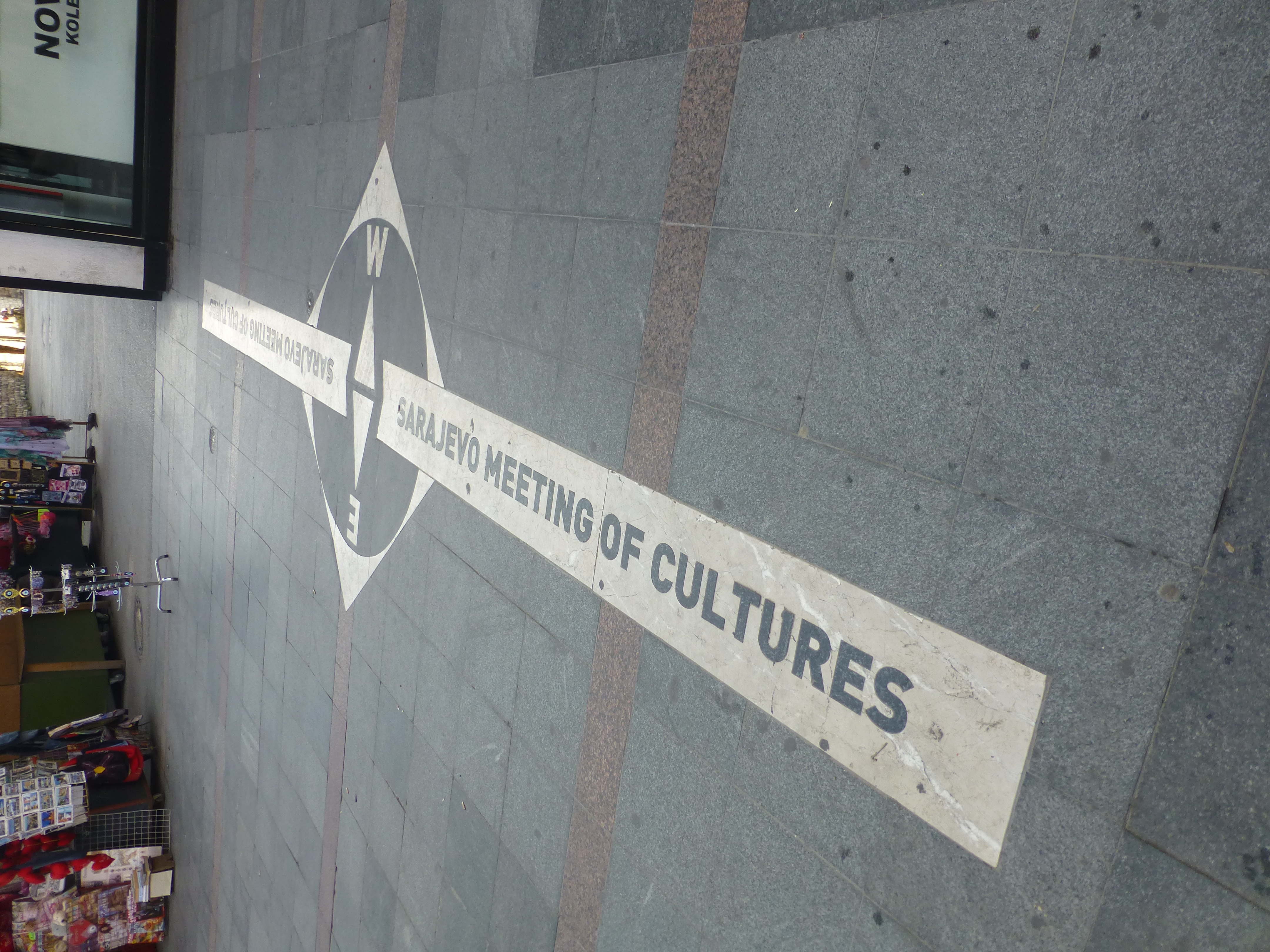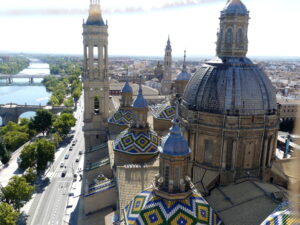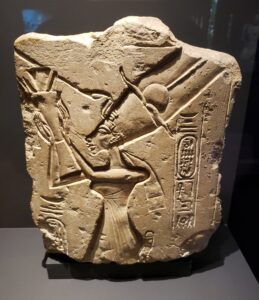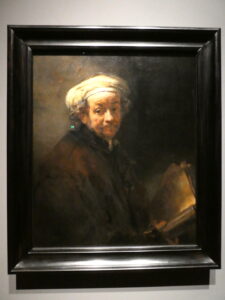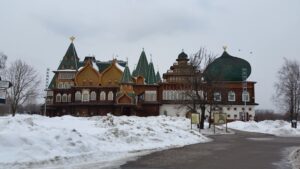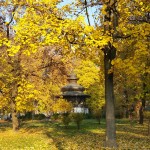
The two women, dressed similarly in jeans and warm jackets, admired the cat sitting on our fleece jackets. The warm afternoon sun had sunk below the buildings, putting us in complete shadow, and the air was turning chilly. But the cat was curled up in a cozy bundle next to us. The two women started talking with us.
They were musicians studying at the Sarajevo Academy, one a violinist and one a flutist, both graduating in a few months. Though they mostly practiced western music like Bach and Mozart, they made money as members of a group playing eastern music in local cafes. They differed in religion and country: one was Serbian, Orthodox Christian; the other was Bosnian, a Muslim. The Serbian admitted, “Many of my friends and family worried about my coming to Sarajevo and Bosnia. The Muslims were dangerous they said. But that’s so untrue; and we don’t care. We’re friends, and just want to make music together.”
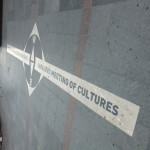
Our encounter with them was oddly fitting. We were all near the pedestrian boulevard running east and west thru the old town of Sarajevo – close by the point where Saraci on the eastern end of the boulevard within the old Turkish Quarter becomes Ferhadija street on the western end running through the later Austro-Hungarian part of the city. There, a touristy plaque proudly proclaims the junction of east and west.
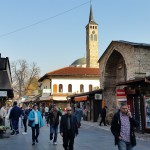
A few days earlier, near this junction, the landlord of our apartment proudly boasted of the same linkage while we stood on the outdoor deck. You look east and you see the old Islamic town the Ottomans developed. You look west from the same point and you see the grand ambitions of the Austro-Hungarian empire.
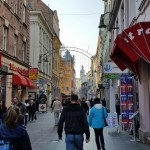
If you walk the boulevard portion named Saraci, you pass through the narrow lanes of Bascarsija, sidling past traditional coffee houses serving local ‘mud’ coffee, shisha lounges or gardens where alcohol is prohibited, shops serving pungent Bosnian street food, and innumerable mosques. If you walk west on Ferhadija, you find coffee shops for espressos or lattes, broad lanes and plazas, Irish pubs and Cheers bars, pizza and pasta restaurants, as well as Serbian Orthodox and Catholic churches.
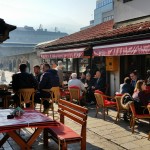
In the margin between the two, everything mixes. Italian restaurants with alcohol on the menu, fancier versions of street food, plus even a “Texas steakhouse.” Away from the central city, the mix continues. Just across the river, in our apartment building, a shisha bar offering only juices and teas to drink sits next to a fancy pizza and pasta spot. The shisha smokers regularly order food delivered from the restaurant to the bar. On the same street, mosques and churches and synagogues alternate. A few kilometers away, even the dead of all religions rest together in a huge cemetery.
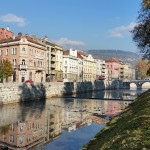
For at least six hundred years, Sarajevo (and Bosnia) has been a cultural blender of east and west, where several religions and contrasting cultures mixed together peacefully and productively.
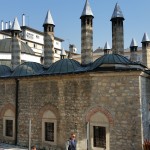
The city was at most only a village until the mid-15th century. When the Muslim Ottomans occupied the region, however, they began to construct a major city here. Their enlightened and moderate rule let people of other religions – Catholic Christians, Eastern Orthodox and Jews – prosper under their rule. Jews in particular found a welcoming land after being evicted from Spain in 1492. Sarajevo itself flourished as a cross-roads for trade between east and west. Ottoman rule was threatened at times, but lasted for about 400 years.
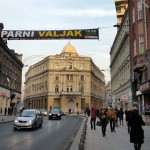
That’s when the Austro-Hungarian empire swept in. Its leaders modernized the city and gave it a more western look, but still gave much leeway to the various religious and ethnic groups that had long mixed here successfully. Throughout the city, alongside the expected Secessionist and neo-classical buildings erected, you see eastern influence even under the Austro-Hungarian empire. New parts of town like what is now called Marshall Tito street are uniformly late 19th century in style.
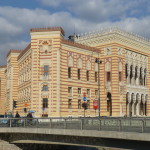
Yet the town hall adjacent to the Turkish Quarter adopted a neo-Moorish design that echoed the old days. Similarly, the new Ashkenazi Jewish Synagogue from the start of the 20th century looks Moorish.
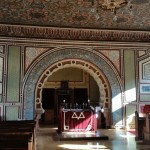
Ironically, the town hall was the last place the Archduke, heir to the Austro-Hungarian throne, visited before he was shot by a Serbian nationalist. Serbia, resurgent over the decades before, had laid claim to Bosnian land held by Austro-Hungary. In response to the assassination, the Habsburgs declared war on Serbia, Russia came to aid Serbia, and the hell of World War 1 erupted.
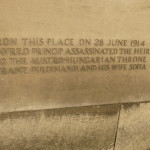
With foreign intervention and the second World War, Serbia, Croatia and Bosnia joined together for a while and broke apart. They were rejoined as a united set of republics under the benign communist dictatorship of Josip Tito after the war. Sarajevo as well as Bosnia & Hercegovina – both medleys of Catholic Croats, Muslim Bosniaks (the descendants of the Ottomans) and Serbian Slavs – flourished harmoniously again until Tito’s death. Then the tensions beneath the surface revived in the early 90s: the Serbian republic to the east fought the Croatian one to the west, with Bosnia torn up in the middle of the conflict.
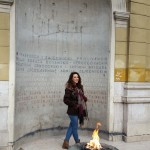
When peace finally came after over four years of war, the country was stitched together again as a barely decipherable patchwork of entities, with rotating leadership of the country overall.
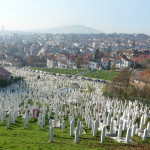
“You can hardly figure out where you are,” said one local we met, “you turn around and you’re in a different republic.” He proved correct, as we saw during our drives around the countryside, passing variously through the Republic of Srpska (home largely for the Bosnian Serbs and the eastern orthodox religion), or the cantons of the central Federation, including Sarajevo and environs (home mainly for Bosniak Muslims and Catholic Bosnian Croats) or Catholic Hercegovina.
It’s not surprising that old wounds still ache and distrusts simmer, often because today’s politicians exploit differences for their own ends, instead of working together to foster investment. “The willingness for all groups to live together in peace is not so strong as it was before the war,” another Sarajevan told us. “Even moderates tend to be drawn into more extreme positions. After all, there are too few jobs for people except for government ones or national companies controlled by the religious or ethnically based parties.”
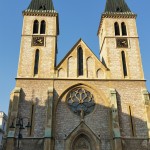
Nonetheless, Sarajevo still seems exemplary for a world all too often riven by race, religion, ethnicity and more. On Sunday, the bells of the cathedral on Ferhadija street sound almost hourly for Catholics to assemble for mass.
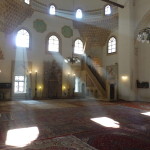
Soon you could hear the chanting call to prayer at the equally splendid Gazi Husrev-beg mosque just to the east on Saraci, and echoes of the call from the many other mosques. A few blocks away you could inhale the incense wafting from the vast Serbian Orthodox church. The day before, just across the river, at the comparably sized Ashkenazi Jewish synagogue, ancient chants rose from the elaborately decorated prayer hall.
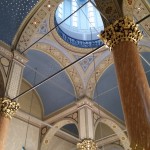
There are signs of hope economically as well. Seeking educated workers at low salaries, a large Italian textiles company just set up shop here.
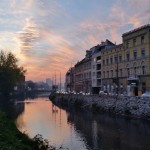
The country is increasingly a magnet for tourism. A beautiful, mountainous area within the western Balkans – with such historical interest and attractive towns as Sarajevo and Mostar, superb national parks, exciting white water rivers, Olympic slope skiing, impressive canyons, waterfalls, fascinating history underscored by rebuilt and ruined structures, and so on. There are plenty of reasons for people to veer away from the Croatian coast for a visit, and more are doing so.
Sarajevo and Bosnia, we expect, will continue to be the place where musicians can make music together and cultures mix.
(Also, for more pictures from Croatia & BiH, CLICK HERE to view the slideshow at the end of the Croatia & BiH itinerary page.)


